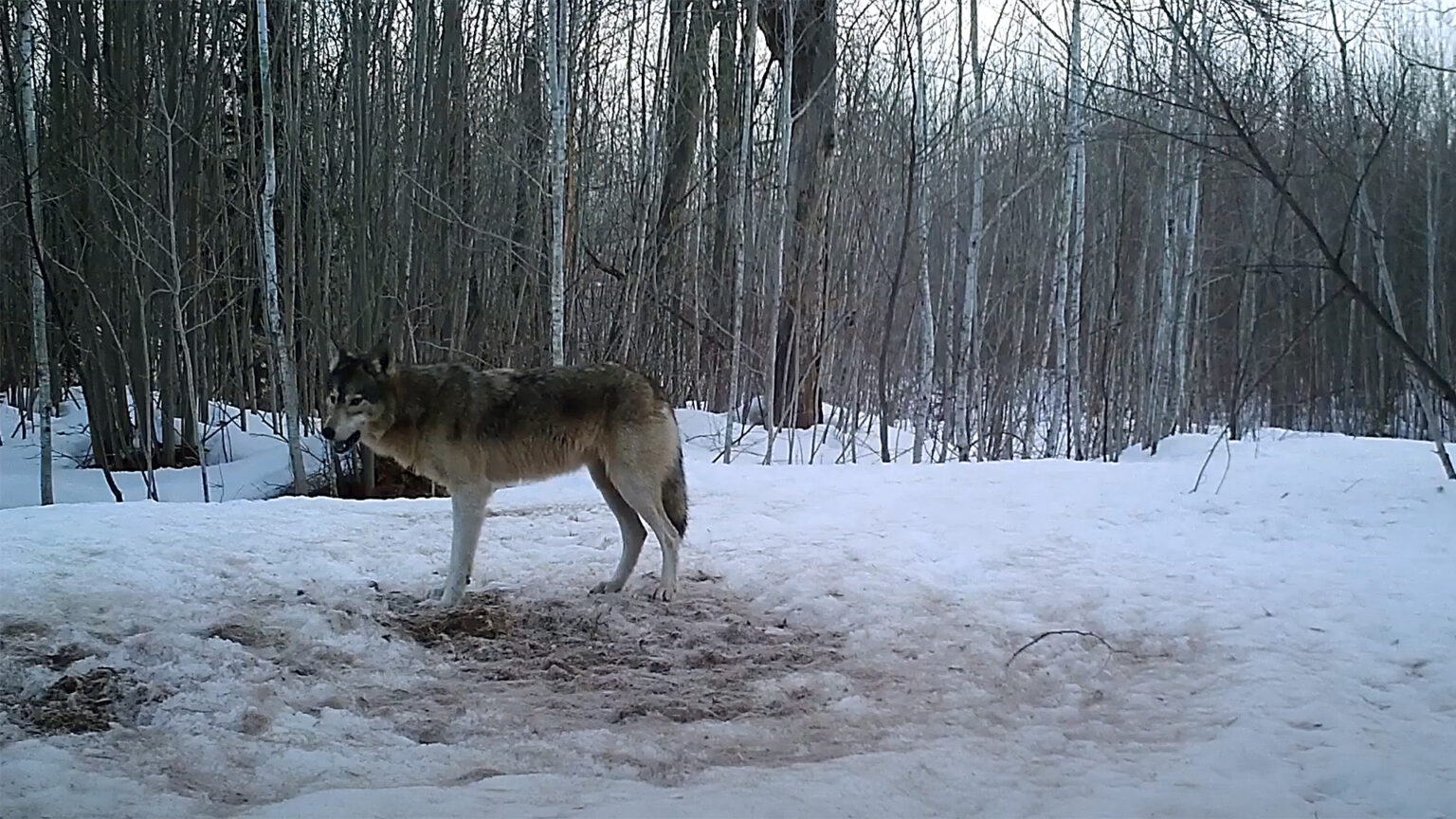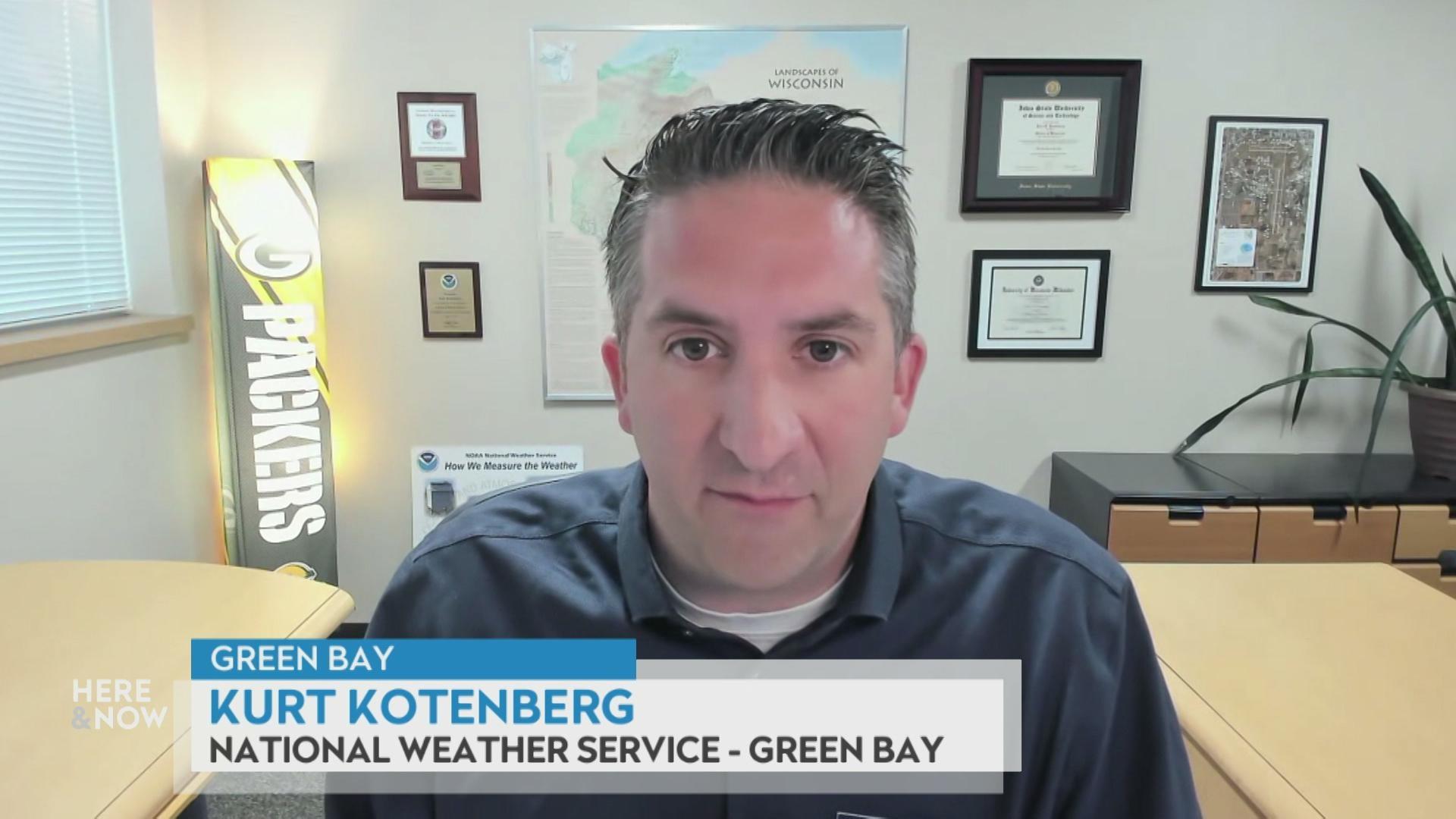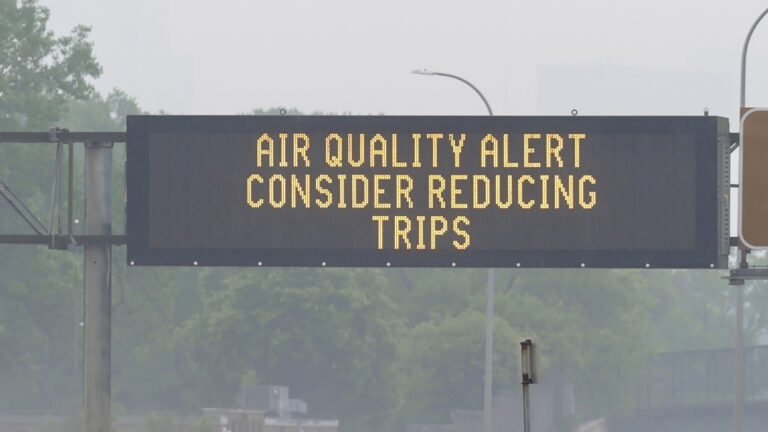What deer and wolf numbers in Bayfield County reveal about Wisconsin wildlife policy debates
The Wisconsin Department of Natural Resources has released its 2023 figures for that season's deer hunt harvest, the state's estimated wolf population and depredation payments, illustrating the complex trends central to the politics of regulating a controversial and charismatic animal.
March 27, 2024 • Northern Region

A trail camera image shows a wolf in Bayfield County in 2000. Most of the wolf packs in Wisconsin are observed in northern regions of the state, including in Bayfield County. (Credit: Courtesy of the Red Cliff Band of Lake Superior Chippewa)
Deer hunting comes up a lot when people talk about wolves in Wisconsin. The harvest numbers for the 2023 gun season showing an annual dip in the number of deer taken home are likely to feed more conversations.
Only about 295,000 deer were harvested in Wisconsin in 2023, representing a more than 50% decline since 2000 when hunters bagged over 600,000 deer statewide. Over that same time period, wolves have more than quadrupled in number.
But despite a declining harvest, Wisconsin’s estimated post-hunt deer population has steadily grown over the past 15 years — in 2008 they numbered just over a million, and are 1.7 million strong in 2023. In comparison, the state’s estimated wolf population has grown from about 250 in 2000 to about 1,000 in 2023, though that number could be as high as 1,400.
Almost all of Wisconsin’s wolf population growth has come from packs in the northern half of the state. It’s in this area where deer harvest numbers have fallen the most, with most deer population growth observed in the southern half of the state.
Data from the Wisconsin Department of Natural Resources shows that Bayfield County has seen an 80% decline in deer harvests since peaking in 2000. The DNR also estimates that the deer population in Bayfield County has stayed roughly the same since 2008.
“Everything has a purpose, and the ma’iingan has a purpose in the environment, to help keep balance,” said Marvin DeFoe, or Shingbinase, a tribal elder with the Red Cliff Band of Lake Superior Chippewa, in an interview with PBS Wisconsin. Ma’iingan means wolf in Ojibwe (also called Anishinaabemowin). “Another part of the ma’iingan’s job is the universal law, where the ma’iingan has a job to keep the world turning.”
So what’s happening with these two animals? Deer harvest totals are declining, even as deer populations are staying level or rising throughout the state as wolves continue to grow in numbers.
“Hunter expectations got so high in the early 2000s when we had the highest deer numbers we have ever had,” Greg Kessler, the DNR’s wildlife manager in Douglas County told the Duluth News Tribune in November 2023. “We will probably never see that again.”
During the high-water mark in 2000, there were over 694,000 licensed gun hunters, who recorded a remarkable 76% success rate. Historically, an average success rate is around 37% in Wisconsin.
Along with that higher success rate, the 2000 season had far more licensed gun hunters. The number of gun season licenses issued in Wisconsin has steadily declined since the 2000, falling to just over 420,000 in 2023.
Conflicts with livestock
The Wisconsin DNR also released its wolf depredation report for 2023. For this report’s purposes, depredation describes the money paid out to individuals as a remittance for wolves killing livestock and other domesticated animals, including cattle and hunting dogs.
The report shows that over $175,000 was paid out to farmers statewide, an increase in payments made for livestock or other domestic animals compared to 2022. However that number is in line with the 10-year average.
But farmers say that the emotional toll of killed animals is more meaningful than money.
“I think the biggest fact is that wolves, they’re just predatory,” said Brad Olson, president of the Wisconsin Farm Bureau, in an interview with PBS Wisconsin. “Things that 20 years ago just could not have happened [are happening].”
For others, if livestock is killed by a wolf, it’s a sign a farmer needs to beef up protection, not go after the predator.
“Being attentive and adapting and watching your livestock, knowing when something might be off and trying to stop conflict before it happens [is important],” said Genevieve Adamski, the wildlife specialist with the Red Cliff tribal government, in an interview with PBS Wisconsin. She grew up on a farm that raised cattle near the Green Bay area.
“Our family never had calves being born extremely far away from the barn because a coyote might pick it off,” she said. “Know your animals’ patterns and keep an eye on them.”
Adamski said that tribal governments often give out preventative tools for free to anyone in their area. Those items can include noise boxes, additional fencing or predator deterrent scents.
Whatever happens next with how gray wolf populations are regulated at the state or federal levels, this charismatic species will continue to command the attention of and have conflicts with humans.
 Passport
Passport











Follow Us